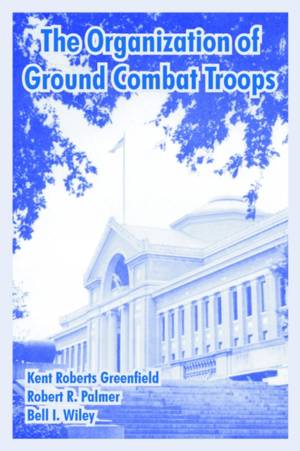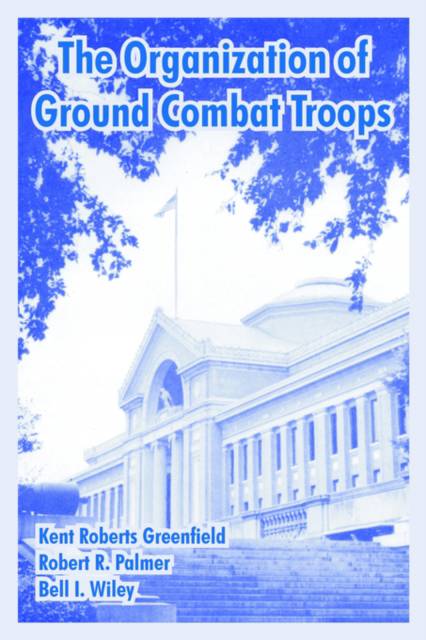
- Retrait gratuit dans votre magasin Club
- 7.000.000 titres dans notre catalogue
- Payer en toute sécurité
- Toujours un magasin près de chez vous
- Retrait gratuit dans votre magasin Club
- 7.000.0000 titres dans notre catalogue
- Payer en toute sécurité
- Toujours un magasin près de chez vous
The Organization of Ground Combat Troops
Kent Roberts Greenfield, Robert R Palmer, Bell I Wiley
Livre broché | Anglais
31,45 €
+ 62 points
Format
Description
The present volume consists of six studies dealing with basic organizational problems of the ground forces. The first study concerns the antecedents of the Army Ground Forces, during the years 1940-42, as represented by General Headquarters, U.S. Army, from which the Army Ground Forces and its policies in respect to the organization and training of the ground troops developed. Given the limited objective inherent in the mission of the authors as members of the Historical Section, Army Ground Forces, the study of General Headquarters is not an exhaustive treatise on that organization, but emphasizes its exercise of those functions and activities which were later assumed by the Army Ground Forces. Nevertheless, such subjects as the activities of GHQ in planning and directing operations and the steps involving GHQ which led to the reorganization of the Army high command in March 1942 are included, not only to round out the picture, but also to contribute to the understanding of larger questions the information found in the records of GHQ. The next four studies in this volume give an account of the principal problems and decisions of the Army Ground Forces regarding the size, internal organization, and armament of the ground troops deployed in World War II. The last study explains the part played by the Army Ground Forces in the redeployment and reorganization of the ground forces for the final assault against Japan. The point of view represented in the studies is that of General Headquarters and of the Army Ground Forces, and only their decisions are fully documented. In general, research was carried beyond the records of these two organizations only so far as seemed necessary to explain their views and decisions. No effort was made to explore facts not known to them at the time when action was recommended or taken. It is recognized that a knowledge of other facts and circumstances is necessary for a balanced judgment of their recommendations and decisions, a knowledge which will be attainable only when the history of the war, and of the part played by the War Department and the U.S. Army in winning it, has been written.
Spécifications
Parties prenantes
- Auteur(s) :
- Editeur:
Contenu
- Nombre de pages :
- 576
- Langue:
- Anglais
Caractéristiques
- EAN:
- 9781410220325
- Date de parution :
- 12-02-05
- Format:
- Livre broché
- Format numérique:
- Trade paperback (VS)
- Dimensions :
- 156 mm x 234 mm
- Poids :
- 793 g

Les avis
Nous publions uniquement les avis qui respectent les conditions requises. Consultez nos conditions pour les avis.






